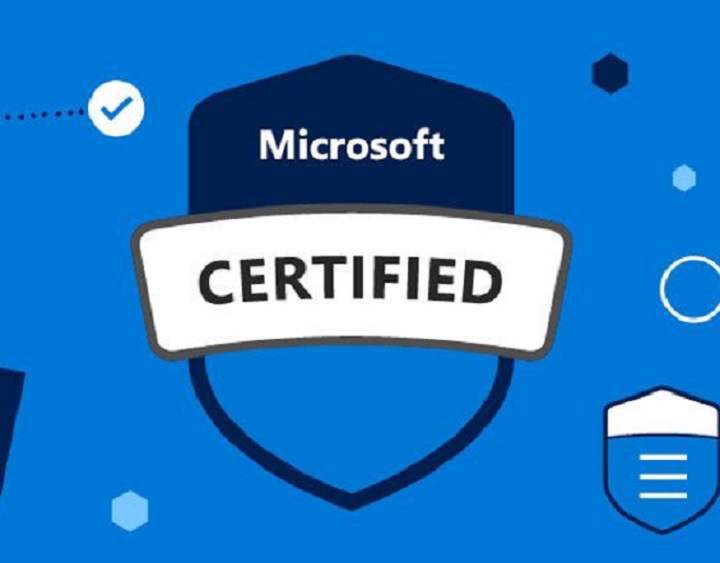MCSA Training Program
Microsoft Certified System Associate program is a 2-5 months certification level Information Technology course. While pursuing the course, candidates will be introduced to the following areas regarding Microsoft Windows operating system, related desktop systems, networking and Microsoft Back office served products.Not to be confused with Microsoft's now retired Microsoft Certified Systems Associate (MCSA) certifications, the MCSA certifications are designed as a way for entry-level workers to demonstrate proficiency in a variety of Microsoft products, roles and knowledge areas.
The MCSA certification training and program inculcates within you all the skills that are needed for running and managing a new-age data centre. You also get expertise in systems management, identity management, storage, virtualization, and networking.
Types of MCSA certifications: The MCSA certifications that Microsoft is currently offering include the following:
Course Description/Module :-
1.Windows Server 2008 Active Directory, Configuring:
1.1 Configuring DNS for Active Directory:
Configuring zones
Configuring DNS server settings
Configuring zone transfer and Replication
Configuring the AD infrastructure
Configuring a forest or a domain
Configuring trusts
Configuring sites
Configuring AD replication
Configuring the global catalog
Configuring operation masters
Configuring additional AD server roles
Configuring AD Lightweight Directory Services (AD LDS)
Configuring AD Rights Management Service (AD RMS)
Configuring read-only domain controller (RODC)
Configuring AD Federation Services (AD FS)
1.2 Configuring and maintaining AD objects
Automate creation of AD accounts
Maintain AD accounts
Create and apply Group Policy objects (GPOs)
Configure GPO templates
Configure software deployment GPOs
Configure account polices
Configure audit policy by using GPOs
1.3 Maintaining the AD environment
Configuring backup and recover
Perform offline maintenance
Monitor AD
1.4 Configuring AD Certificate Services
Install AD Certificate Services
Configure CA server settings
Manage certificate templates
Manage Enrollments
Manage Certificate revocations
2. Windows Server 2008 Network Infrastructure, Configuring
2.1 Configuring IP Addressing and Services
Configuring IPv4 and IPv6 addressing
Configuring Dynamic Host Configuration Protocol (DHCP)
Configuring routing -Configuring IPsec
2.2 Configuring Name Resolution
Configuring DNS Server
Configuring DNS zones
Configuring DNS records
Configuring DNS replication
Configuring name resolution for client computers
2.3 Configuring Network Access
Configure remote access
Configure Network Access Protection (NAP)
Configure network authentication
Configure wireless access
Configure firewall settings
2.4 Configuring File and Print Services
Configure a file server
Configure Distributed File System (DFS)
Configure shadow copy services
Configure backup and restore
Manage Disk Quotas
Configure and monitor print services
2.5 Monitoring and Managing a Network Infrastructure
Configure Windows Server Update Services (WSUS) server settings
Capture performance data
Monitor event logs
Gather network data
3. Windows Server 2008 Application Infrastructure, Configuring
3.1 Deploy Servers
Deploy images by using Windows Deployment Services
Configure Microsoft Windows Activation
Configure high availability
Configure storage
3.2 Configuring Terminal Services
Configure Windows Server 2008 Terminal Services RemoteApp (TS RemoteApp)
Configure Terminal Services Gateway
Configure Terminal Services load balancing
Configure and monitor Terminal Services resources
Configure Terminal Services Licensing
Configure Terminal Services client connections
Configure Terminal Services server options
3.3 Configuring a Web Services Infrastructure
Configure Web applications
Manage Web sites
Configure a File Transfer Protocol (FTP) server
Configure Simple Mail Transfer Protocol (SMTP)
Manager Internet Information Services (IIS)
Configure SSL security
Configure Web site authentication and permissions
3.4 Configuring Network Application Services
Configure Windows Media Server
Configure Digital Rights Management (DRM)
Configure Microsoft Windows SharePoint Services server options
Configure Windows SharePoint Services e-mail integration


